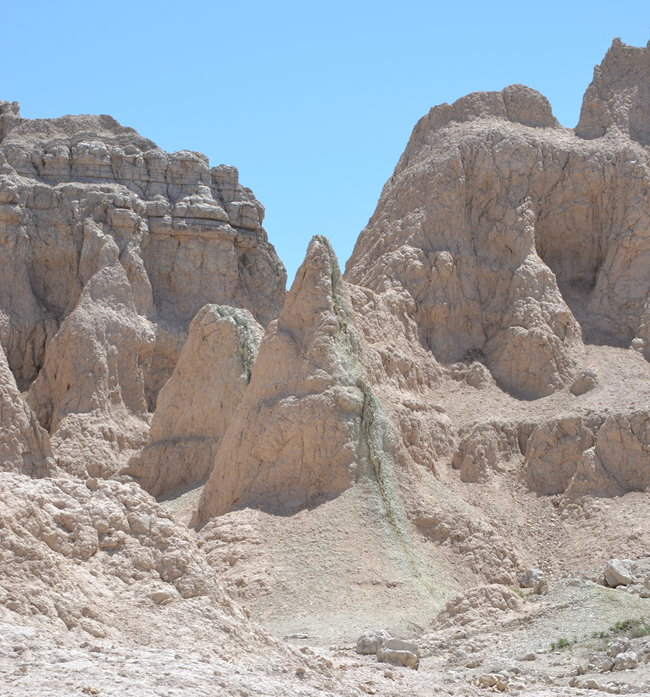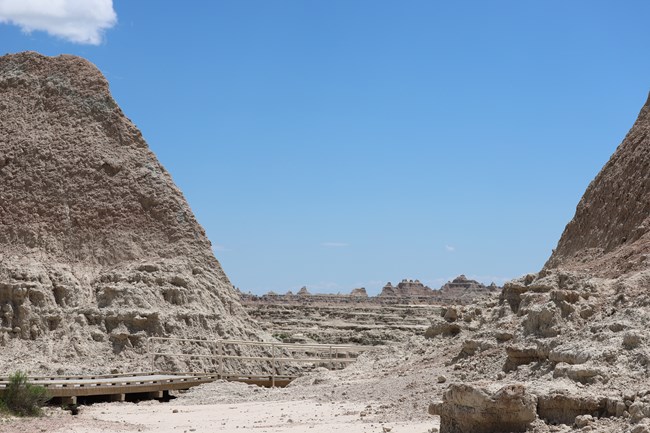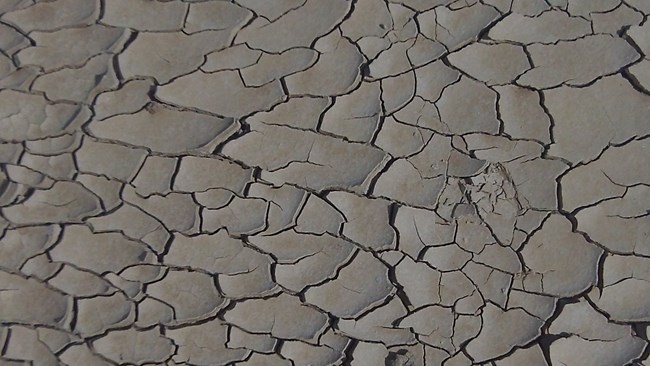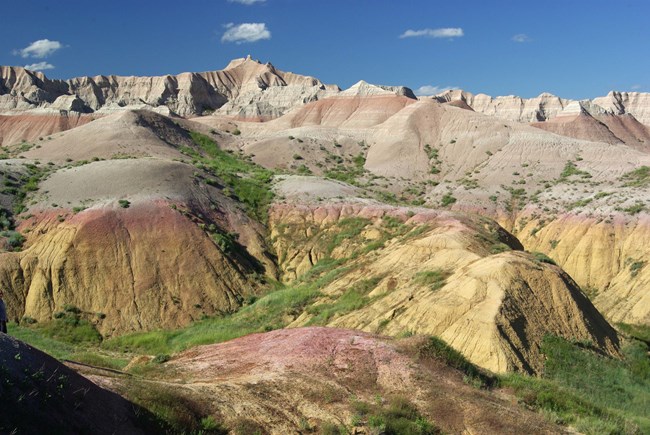Part of a series of articles titled Badlands Geology and Paleontology.
Article
Clastic Dikes: Backbones of the Badlands

NPS Photo
What’s in a name?
What is a clastic dike? The secret is in the name: they are dikes made up of clasts.
Dike: a vertical sheet that cuts through horizontal rock.
Clast: a little chunk of rock that forms a sedimentary rock, like the sand in sandstone or the mud in mudstone.

NPS Photo / Alex Ennes
What do clastic dikes look like?
Once you see them, clastic dikes are impossible to miss. They are vertical sheets of rock that cross-cut the horizontal layers of the badlands, like in the picture below. They are usually a different color than the surrounding rock, with tan, green, and red shades most common. These colors are caused by minerals like hematite (rust) and chlorite.
They are often more resistant than the rocks that surround them, functioning like tentpoles that hold up ridges of badlands material. The “door” passage on the Door trail is an excellent example of this. Many of the spectacular ridges and spires in Badlands National Park are at least partially supported by clastic dikes.

NPS Photo / Brad Barker
Where can I find clastic dikes?
In the North Unit of the park, clastic dikes are particularly common in the area around the Door/Window overlook, including the Door Trail and Notch Trail. However, keep your eyes peeled as you drive the scenic Badlands Loop Road -- at least one clastic dike can be found in most cliffs. On the South Unit/North Unit boundary, the Sheep Mountain Table area is a great place to see clastic dikes.
Puzzling fractures!
Geologists in Badlands National Park have struggled with the history and formation of the clastic dikes since they were discovered. A wide range of theories have been proposed for the formation of these mysterious features, but none explain all the different qualities of clastic dikes in the Badlands.

NPS Photo
Giant Mudcracks
One theory proposes that clastic dikes were giant mudcracks that filled with sediment. Today, fine clays in the badlands will form mudcracks through a two-step process. First, rain soaks the fine clay, which absorbs huge amounts of water and becomes a sticky, muddy mess. Next, the clays slowly dry, shrinking as the water evaporates. This creates a fractured, popcorn-like surface of mudcracks.
According to this first theory, clastic dikes are massive mudcracks that then filled with clasts! However, nowhere on Earth do mudcracks get as large or deep as the clastic dikes found in the Badlands -- some clastic dikes are 30 meters deep and run for a quarter mile. Clastic dikes also lack the popcorn structure of the mudcracks that form in the Badlands today -- they crisscross each other randomly. Finally, mudcracks taper downwards, pinching out several meters below the surface (at most). Some clastic dikes taper downwards, but others pinch out upwards!

NPS Photo
Pulling Apart
Another theory argues that clastic dikes were caused by the pulling apart of the Badlands rocks soon after those rocks were deposited. The Black Hills to the west of the park were formed by thousands of feet of rock layers being compressed into a large dome. This intense squishing can lead to a type of stretching called extension in the surrounding rocks, as layers settle and pull apart. In fact, the layers of rock that are tilted and fractured near the Yellow Mounds Overlook along the Badlands Loop Road give evidence of this type of stretching.
However, the cracks that are formed by extension are generally aligned the same way (all run north to south, for example). This is not the case for clastic dikes; some run north to south, some east to west, and some have a curved, bending shape. While extension may be responsible for some of the formation of clastic dikes, it does not explain them by itself.
Other Theories
Other theories for the formatting of clastic dikes include recrystallizing minerals in the badlands layers and earthquakes causing liquified ash to push upwards into badlands rocks. The Badlands are the only place where clastic dikes like these are found, so geologists cannot compare these features to similar dikes that have been studied in other places. As you make your way through Badlands National Park, keep a close eye out for clastic dikes -- maybe you will see something geologists have missed!
Last updated: November 10, 2020
